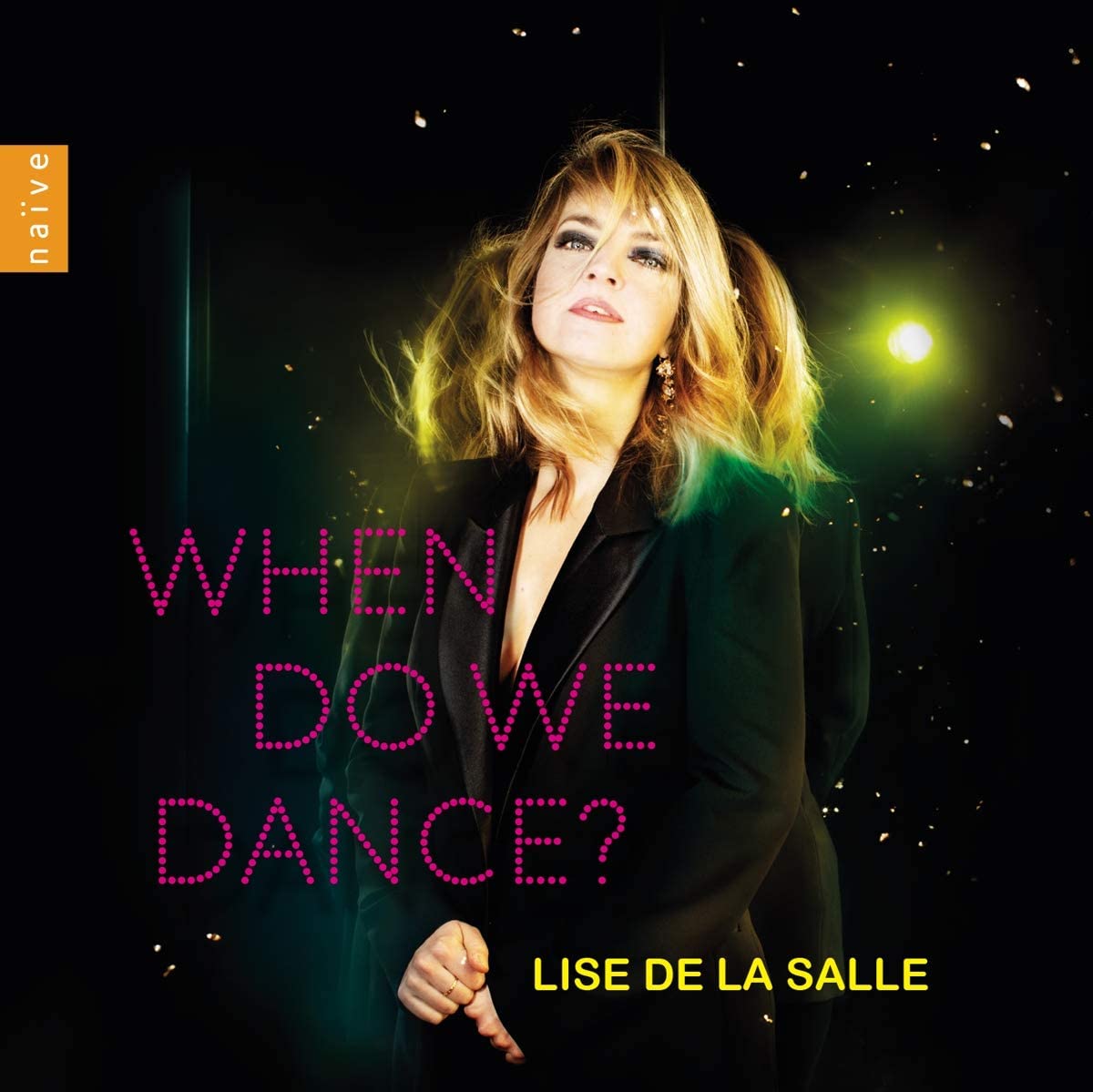Lise De La Salle: When Do We Dance?
View record and artist detailsRecord and Artist Details
Genre:
Instrumental
Label: Believe Recordings
Magazine Review Date: 08/2021
Media Format: CD or Download
Media Runtime: 81
Mastering:
DDD
Catalogue Number: V5468

Tracks:
| Composition | Artist Credit |
|---|---|
| (6) Romanian Folkdances |
Béla Bartók, Composer
Lise de la Salle, Piano |
| (3) Ghost Rags, Movement: Graceful ghost |
William (Elden) Bolcom, Composer
Lise de la Salle, Piano |
| (El) Amor brujo, Movement: Ritual Fire Dance |
Manuel de Falla, Composer
Lise de la Salle, Piano |
| Tip-Toes, Movement: When do we dance? |
George Gershwin, Composer
Lise de la Salle, Piano |
| (3) Danzas argentinas |
Alberto (Evaristo) Ginastera, Composer
Lise de la Salle, Piano |
| Libertango |
Astor Piazzolla, Composer
Lise de la Salle, Piano |
| Polka Italienne |
Sergey Rachmaninov, Composer
Lise de la Salle, Piano |
| (8) Valses nobles et sentimentales |
Maurice Ravel, Composer
Lise de la Salle, Piano |
| (6) Etudes, Movement: En forme de valse |
Camille Saint-Saëns, Composer
Lise de la Salle, Piano |
| Valse |
Alexander Scriabin, Composer
Lise de la Salle, Piano |
| Tango |
Igor Stravinsky, Composer
Lise de la Salle, Piano |
| Tea for two |
Art Tatum, Composer
Lise de la Salle, Piano |
| Vipers Drag |
'Fats' (Thomas Wright) Waller, Composer
Lise de la Salle, Piano |
Author: Michelle Assay
Lise de la Salle is no stranger to mixing and matching composers and eras, as her half a dozen CDs to date indicate. Here she has devised an entertaining recital that samples dance-based music from six corners of the world, covering a span of almost a century from 1877 to 1970.
This collection of some 27 tracks has much potential for swaggering pianistic panache blended with sensuous poetry. Unfortunately, de la Salle’s playing falls short on both counts. On the plus side, she clearly has a genuine fascination for the world of dance, and she demonstrates much technical fortitude and a fine ear for blending and voicing. She’s also sensitive to the distinct characteristics of cultures as they meet and clash. But in order for the album to be more than a career calling card (which she should surely be beyond), there needs to be far more dazzle and flair. Often she is too cautious and fastidious, too fussy in her rubato, for the music to take off. Take the title-song, Gershwin’s ‘When do we dance?’, from the 1925 musical Tip-toes, and compare her polite traversal with the rawness and wit that Gershwin himself brings to it. Her ‘Tea for two’, despite the string of fast notes, is but a pale shadow of Art Tatum’s pyrotechnics, and her Falla Ritual Fire Dance is a sputter beside the conflagrations unleashed by Cziffra or Rubinstein.
When in her element de la Salle’s imagination does have its moments, as in her sensitive response to Ravel’s Valses nobles. But just as often, naturalness and sincerity are buried beneath over-emphasis. Less is more for a piece such as Bolcom’s sweetly nostalgic Graceful Ghost Rag (a guilty pleasure of mine), and for a properly haunting account of Ginastera’s feverish ‘Danza de la moza donosa’ look no further than Argerich, not to mention her lightning streak through his ‘Danza del gaucho matrero’. Or compare de la Salle’s fussiness with the composer’s straightforwardness in Bartók’s Romanian Folk Dances.
Sadly, the CD booklet is taken up by an interview that is more interested in the pianist than in the music, offering not even a rough guide to this tour du monde.
Discover the world's largest classical music catalogue with Presto Music.

Gramophone Digital Club
- Digital Edition
- Digital Archive
- Reviews Database
- Full website access
From £8.75 / month
Subscribe
Gramophone Full Club
- Print Edition
- Digital Edition
- Digital Archive
- Reviews Database
- Full website access
From £11.00 / month
Subscribe
If you are a library, university or other organisation that would be interested in an institutional subscription to Gramophone please click here for further information.




